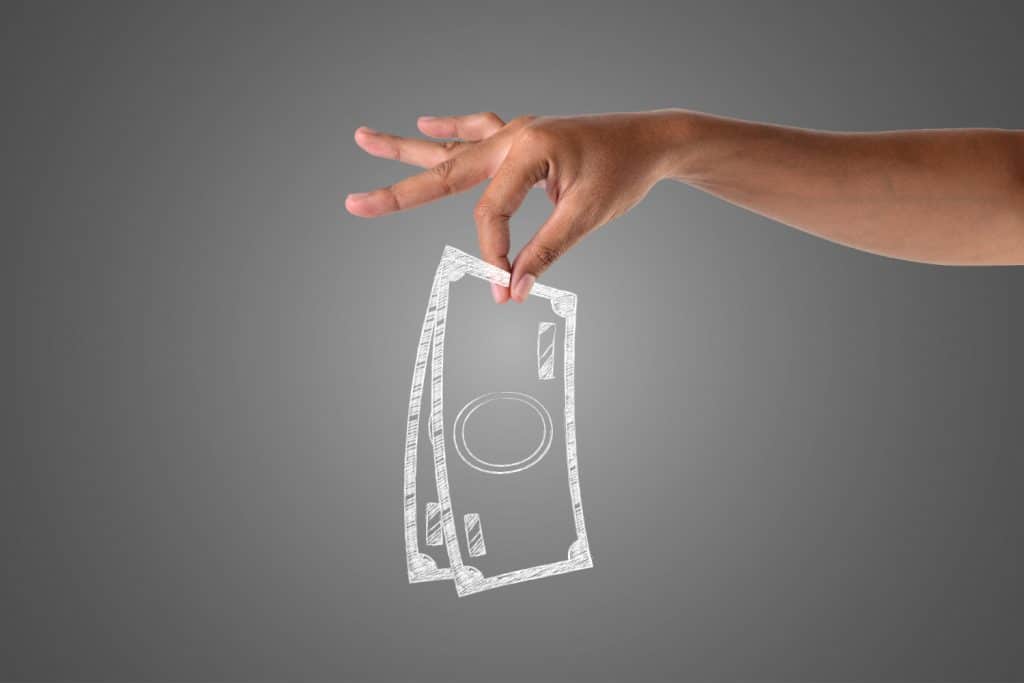Split direct deposit: a smarter way to manage your paycheck

Anúncios
A tool that can help optimize your financial goals is the split direct deposit feature. But what is split direct deposit, and how exactly does it work?
Managing your paycheck wisely can make a big difference in your financial life. Whether you’re trying to save more, avoid unnecessary spending, or build an emergency fund, the way your money is distributed matters.
In this guide, we detail everything you need to know — from how to set it up to the advantages and potential drawbacks.
If you’re looking for a more efficient and automated way to take control of your finances, keep reading. This could be one of the simplest yet most powerful moves you can make.
What is split direct deposit, and how does it work?
A split direct deposit is a method of distributing your paycheck into multiple accounts automatically.
Instead of depositing your entire paycheck into a single checking account, your employer splits the payment based on your instructions — sending part to your checking account, part to your savings, or even to a separate account for specific goals like travel or debt repayment.
So, what does split direct deposit actually do? It helps you pre-allocate your income before you even touch it.
You can choose to split the amount by fixed dollar amounts or percentages, and most employers allow up to two or three splits (sometimes more).
This level of control means you’re essentially putting your money to work the moment it hits your account.
How to set up a split direct deposit
Setting up a split direct deposit is usually simple and can be done through your HR department or payroll portal.
First, decide how you want to split your paycheck — by percentage or fixed amount — and determine which accounts the money should go to. A common example: 80% to checking, 20% to savings.
Next, gather your account numbers and bank routing numbers for each destination account.
Then, fill out your employer’s direct deposit form, specifying the split amounts or percentages.
Once submitted, changes typically take one or two pay cycles to take effect. Be sure to monitor your first few deposits to confirm that the distribution is accurate.
What are the benefits of split direct deposit?
Using split direct deposit offers a range of benefits that go far beyond convenience.
It allows you to take control of your finances by automatically distributing your income into different accounts according to your financial goals.
Whether you want to boost your savings, build an emergency fund, or separate funds for monthly expenses, this method helps you stay consistent — without relying solely on manual transfers or self-discipline.
Below, we explore the main advantages that make split direct deposit a smart move for anyone looking to manage their paycheck more efficiently.
Automates your savings
One of the most powerful benefits of split direct deposit is that it removes the manual step of transferring money into savings.
Automating this process ensures that you are consistently building your savings every time you get paid.
It’s one of the easiest ways to follow the “pay yourself first” rule without having to think about it. Over time, even small amounts set aside from each paycheck can add up to significant savings.
No extra fees involved
A major advantage is that split direct deposit is typically a free service offered by most employers and financial institutions.
There are no processing fees or charges to use it. This means you can take advantage of this feature to organize your finances more effectively without worrying about added costs — making it a smart and low-risk financial tool.
Helps build a financial cushion
As part of your paycheck goes directly into a savings account or emergency fund, split direct deposit naturally helps you grow a financial reserve over time.
This can protect you from unexpected expenses, reduce reliance on credit cards, and provide peace of mind.
It’s a proactive way to build financial security without requiring major lifestyle changes.
It’s convenient and low-effort
Once set up, split direct deposit runs automatically. You don’t need to log into your bank every payday or worry about forgetting to move funds.
It removes friction from the savings process and helps maintain healthy financial habits even during busy or stressful periods.
Disadvantages of split direct deposit
While split direct deposit is a powerful financial tool, it’s not without potential downsides.
Depending on how your income is divided and your ability to manage multiple accounts, this method can introduce some complications.
For example, it may require more planning, and if you’re not careful with how you divide your funds, you could end up with overdrafts or lack access to money during emergencies.
It’s important to understand these drawbacks before setting up a split direct deposit so you can avoid mistakes and make the most of the system. Let’s take a closer look at the challenges involved.
It can be confusing at first
If you’re unfamiliar with managing multiple accounts or tracking where your money is going, the setup process for split direct deposit can feel overwhelming.
You’ll need to be organized and intentional about how your funds are divided, or you risk underfunding one account and overfunding another. Errors in setup may take a few weeks to fix.
Risk of overdraft in the primary account
Misestimating your expenses could cause your primary checking account to fall short, leading to overdraft fees or declined transactions.
With a split direct deposit, if you allocate too much to savings and too little to checking, it can disrupt your bill payments.
That’s why it’s essential to carefully plan your budget before defining the split.
Less flexibility in emergencies
Since your funds are automatically allocated, you may find it harder to quickly respond to unexpected expenses.
While it’s great to automate savings, if all your money is tied up in various accounts — especially those with withdrawal limits — accessing those funds in a pinch may take longer. This can be inconvenient in emergencies.

How should you split your paycheck?
There’s no one-size-fits-all formula for splitting your paycheck with split direct deposit, but many financial experts recommend starting with the 50/30/20 rule. This strategy allocates:
- 50% to needs: Rent, groceries, utilities, insurance
- 30% to wants: Dining out, subscriptions, entertainment
- 20% to savings and debt repayment
Using this structure, you might send 80% of your paycheck to your primary checking account (covering needs and wants) and the remaining 20% to a high-yield savings account.
Alternatively, you can split it further: 70% to checking, 20% to emergency savings, 10% to a separate account for travel or long-term goals. Adapt your split based on your financial objectives.
It doesn’t matter if you’re saving for a vacation, building an emergency fund, or paying off loans — split direct deposit allows you to systematize your priorities in a way that fits your life.
So, what is split direct deposit, and why should you consider using it? It’s a simple yet highly effective tool for taking control of your money.
By automating how your paycheck is divided, you’re more likely to stick to your budget, build your savings, and reduce financial stress — with no extra effort.
Like any financial tool, it has its pros and cons, but for many people, the benefits far outweigh the drawbacks.
With careful planning and the right strategy, split direct deposit can help you take a major step toward your financial goals.
Want more practical tips to organize your finances and make smarter money moves? Keep exploring our site — we’re here to guide you, every step of your financial journey.
Looking for a suggestion? Also read our content explaining how Main Mobile Banking works!





